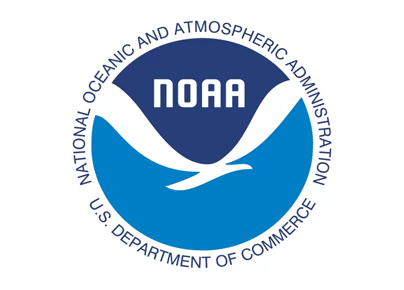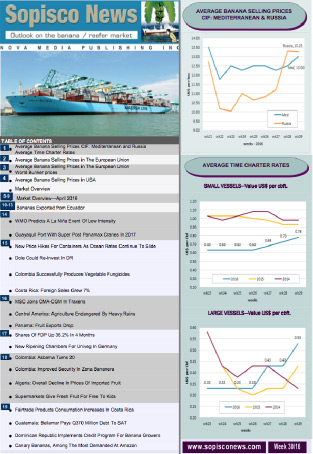More than 55% Chances for a Strong El Niño Says NOAA
2023-11-10

According to the National Oceanic and Atmospheric Administration (NOAA), NOAA's National Weather Service of the USA, above-average sea surface temperatures (SST) across the equatorial Pacific Ocean were indicative of a strong El Niño, with anomalies increasing in the central and east-central Pacific in the past month. The latest weekly Niño index values were +1.4ºC in Niño-4, +1.8ºC in Niño-3.4, +2.1ºC in Niño-3, and +2.2ºC in Niño-1+2. Area-averaged subsurface temperatures anomalies increased slightly associated with the initiation of a downwelling oceanic Kelvin wave, which strengthened above-average subsurface temperatures in the central equatorial Pacific.
Low-level wind anomalies were westerly in the east-central Pacific, while upper-level wind anomalies were easterly in the western and central Pacific. Convection/rainfall was enhanced around the International Date Line, extending into the eastern Pacific. Suppressed convection/rainfall strengthened around Indonesia.
The equatorial Southern Oscillation Index (SOI) and the station-based SOI remained negative. Collectively, the coupled ocean-atmosphere system reflected a growing El Niño.
The most recent IRI plume favors El Niño to continue through the Northern Hemisphere spring 2024. Based on latest forecasts, there is a greater than 55% chance of at least a "strong" El Niño (³ 1.5°C in Niño-3.4 for a seasonal average) persisting through January-March 2024. There is a 35% chance of this event becoming "historically strong" (³ 2.0°C) for the November-January season. Stronger El Niño events increase the likelihood of El Niño-related climate anomalies but do not necessarily equate to strong impacts. In summary, El Niño is anticipated to continue through the Northern Hemisphere spring with a 62% chance during April-June 2024.
Average sea surface temperature (SST) anomalies (°C) for the week centred on November 1 2023. Anomalies are computed with respect to the 1991-2020 base period weekly means.









